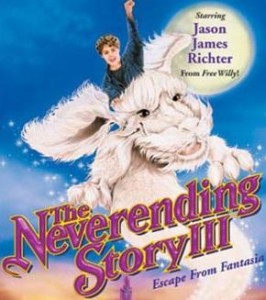
 While most of us use Twitter and other social media for sharing what we’re doing (or indeed “What’s happening“) some use it to tell stories.
While most of us use Twitter and other social media for sharing what we’re doing (or indeed “What’s happening“) some use it to tell stories.
Let’s take a look at some of the ways social media can be used to tell a tale, from serialised novels to a multimedia approach.
The “Twitter Novel”
One method of story-telling via social media is the straightforward novel. Meet Mr Keihl is a novel that launches today and will take an astounding two years to complete at a rate of seven tweets per day. The story is a spy epic set in the year 2130 that recounts the exploits of a legendary agent.
The people behind the project are claiming that it is the first novel ever to be played out entirely via Twitter. This isn’t exactly true. Candyfloss and Pickles is one example of a ‘Twitter novel’ that has been running for well over a year already.
Is Twitter the wrong format for story telling? The author of Meet Mr Keihl seems to be in two minds about that one.
“The concept of the publication of a novel through this medium may be received as counter intuitive, too slow a process for the distribution of such a long format.
Reading a novel 140 characters at a time, however, may be just the right pace for many readers. People often complain that they don’t have the time to sit down and read a book. Subscribing to Meet Mr. Keihl will allow anyone to read a novel without taking time out of their day for it.”
The Fake Account
Fictional characters playing out their lives via social media are nothing new – just look at the success of Lonelygirl15 a few years ago. That used video though, making it little more than an online TV show. The brief text bursts of Twitter can make for a much more intimate experience.
 At first glance this week, ‘dinner_guest’ appeared to be a possible serial killer sharing their gruesome pastime with the world.
At first glance this week, ‘dinner_guest’ appeared to be a possible serial killer sharing their gruesome pastime with the world.
While some thought it was a publicity stunt for a movie, we later uncovered that it was an artist exploring the use of Twitter to let fictional characters tell their stories in a new way.
Some might think that using a murderer as your chosen character is a step too far but it’s certainly an idea that has potential. It’s a twist on the joke celebrity accounts that are a popular part of the Twittersphere.
As the artist behind the project told us, “Some people have said they want to add their own characters now, which is great, maybe dinner_guest will get some creepy friends to play with”.
Which brings us to…
The multimedia crowdsourced approach
There’s more to Social Media than just Twitter of course. What if you gave your fictional characters a variety of accounts on different services?
 November in Manchester is one project trying just that. Billed as a ‘Social Media Love Story’, its eight characters have their own Twitter feeds and blogs. By following the characters involved you can see the story unfold in a much more ‘personal’ way that you would if you were just being told a story in a traditional way.
November in Manchester is one project trying just that. Billed as a ‘Social Media Love Story’, its eight characters have their own Twitter feeds and blogs. By following the characters involved you can see the story unfold in a much more ‘personal’ way that you would if you were just being told a story in a traditional way.
With so many accounts to keep up on you could easily fall behind so the project’s website gives you a daily overview of the plot and a news feed of all the characters’ accounts.
There’s an interactive side to the project too. The author, Tom Mason, wants the city of Manchester to be a key part of the plot. Photos and videos submitted by readers have become an important part of the story. The characters have even ‘attended’ real events in the city as suggested by readers.
Unlike a many social media stories, November in Manchester is designed to play out over one month – much shorter than the traditional . When it comes to online attention spans, shorter is better.
November in Manchester will probably have a better chance of holding onto an audience over thirty days than Meet Mr Keihl will over two years. Will we even still be using Twitter then?
Get the TNW newsletter
Get the most important tech news in your inbox each week.





